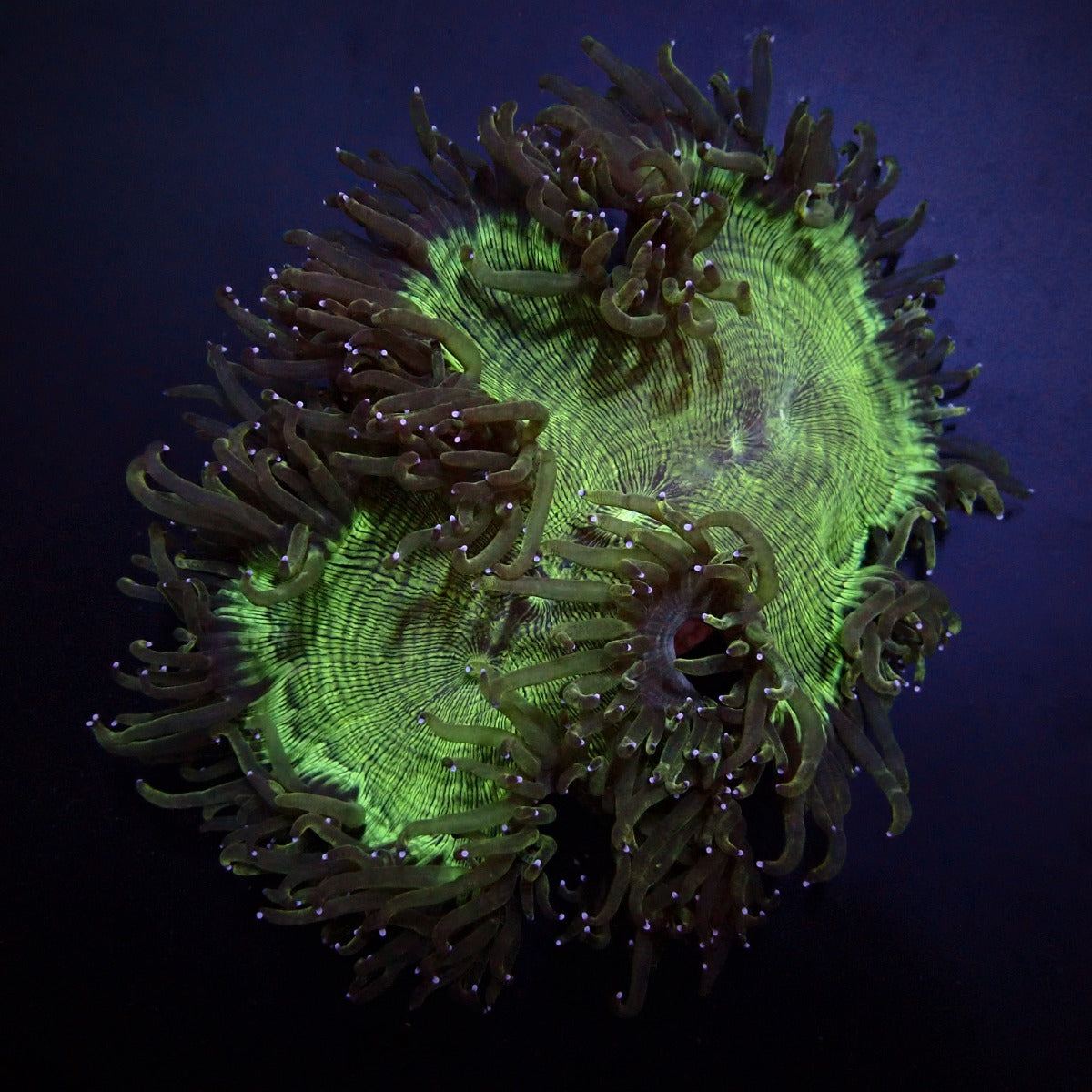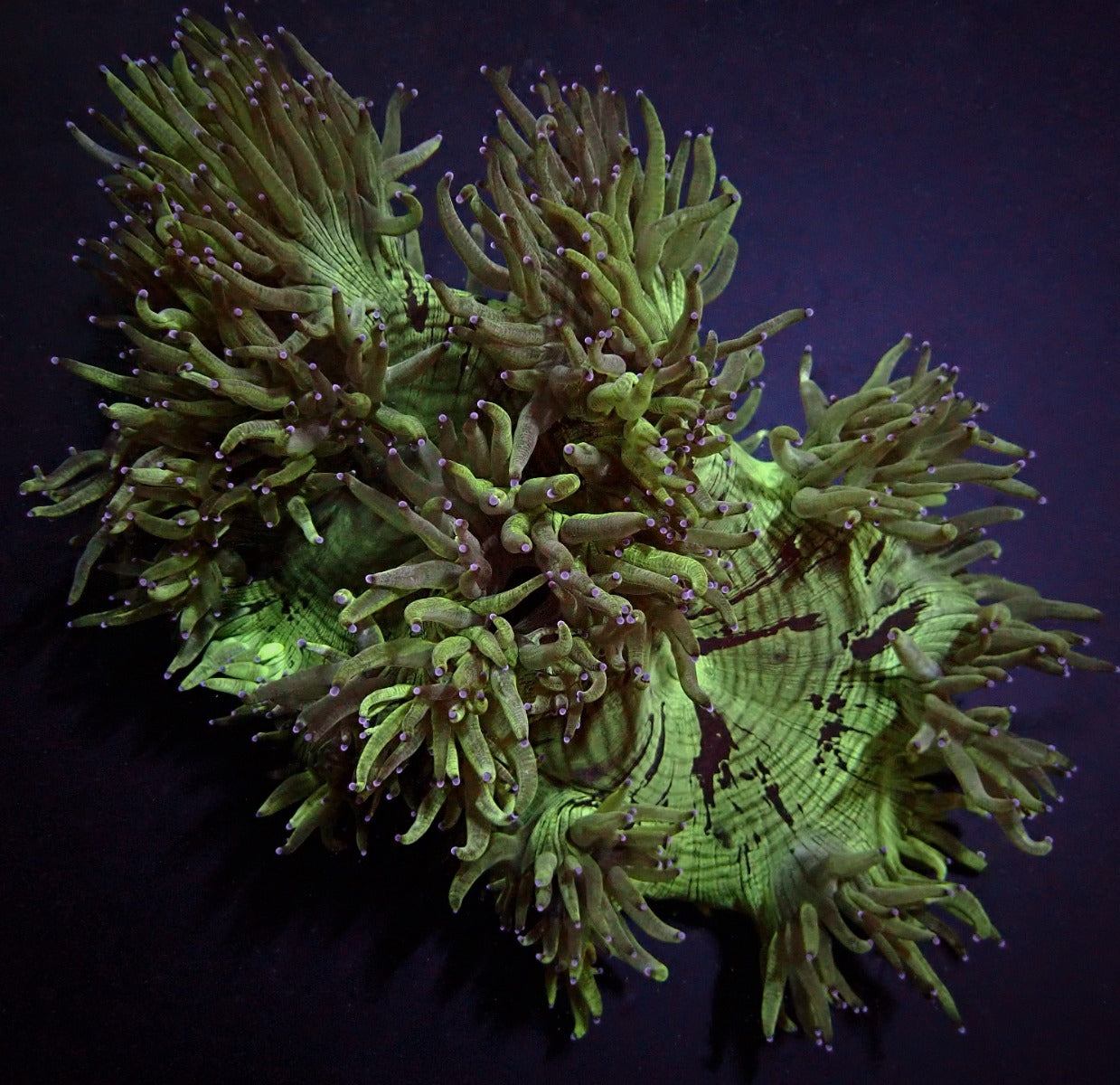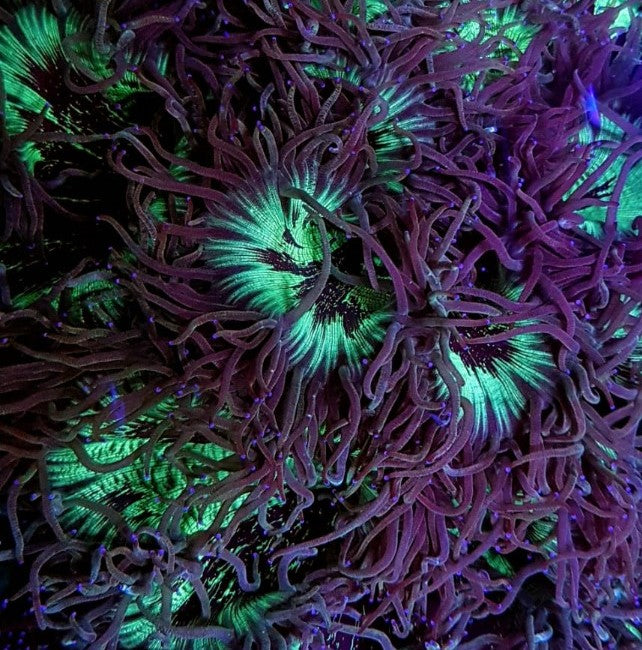Coralreef Store
Catalaphyllia jardinei (Premium)
Catalaphyllia jardinei (Premium)
Couldn't load pickup availability
Indo-Pacific
Moderate to High Care Level
For Experienced Hobbyists
Moderate Placement in Reef Tank
Catalaphyllia jardinei, commonly known as the Elegance Coral, is a captivating species of LPS (Large Polyp Stony) coral native to the Indo-Pacific region. This stunning coral is highly prized for its large, fleshy polyps and vibrant coloration, which can range from green to purple, pink, blue, and brown, often with striking contrasting tips. The coral has a distinctive appearance with its elegant, elongated polyps that sway gently in the water, making it a favorite among experienced hobbyists for its aesthetic appeal. However, due to its specific care requirements and sensitivity to environmental conditions, it is best suited for experienced hobbyists who can maintain stable tank parameters.
Placement in the Tank
Catalaphyllia jardinei thrives under moderate to high lighting conditions. A light intensity of 150-250 PAR is ideal, with the coral best placed in the middle to lower sections of the reef tank to avoid exposure to intense direct light, which could stress it or cause bleaching. It is sensitive to sudden changes in lighting and water flow, so gradual acclimatization to new conditions is essential.
In terms of water flow, this coral prefers gentle to moderate currents. Excessive water movement can cause its polyps to retract, while stagnant flow can hinder proper feeding. A moderate, undulating current is perfect for C. jardinei, helping it to capture food while avoiding stress.
Water Parameters
Maintaining stable and precise water parameters is critical for the health of Catalaphyllia jardinei. The recommended ranges are as follows:
- Temperature: 24°C to 28°C (75°F to 82°F), with 26°C (79°F) being ideal.
- Salinity: 1.023–1.025 specific gravity (SG), with 1.024 being optimal.
- pH: 8.0 to 8.4, with an ideal pH of 8.2.
- Alkalinity (dKH): 8-12 dKH, with 9-10 dKH being ideal for growth.
- Calcium: 400-450 ppm, necessary for robust skeletal development.
- Magnesium: 1250-1350 ppm.
- Nitrate: Less than 5 ppm, as elevated levels can stress the coral and hinder its growth.
- Phosphate: Below 0.03 ppm, as high phosphate levels can lead to unwanted algae growth and affect coral health.
Feeding
While Catalaphyllia jardinei benefits from the zooxanthellae algae in its tissues, which provide it with energy via photosynthesis, it is also a filter feeder that can benefit from supplemental feeding. In aquariums with limited plankton, feeding finely chopped mysis shrimp, brine shrimp, or zooplankton can help ensure proper nutrition. It’s best to feed this coral 1-2 times a week, but avoid overfeeding to maintain water quality.
Maintenance and Care
To maintain a healthy Catalaphyllia jardinei, regular monitoring of tank parameters is essential. Key care steps include:
- Water Changes: Perform regular water changes (10-15% weekly) to help maintain water quality and remove harmful substances.
- Water Parameter Monitoring: Continuously monitor temperature, pH, calcium, alkalinity, and nitrate levels to ensure the coral’s needs are met.
- Pruning: Catalaphyllia jardinei doesn’t require regular pruning, but make sure it has enough space to grow and that nearby corals don’t overcrowd it.
- Pest Control: Watch for pests such as Aiptasia, flatworms, and nudibranchs, which can damage the coral. Immediate action is necessary to remove any pests.
Compatibility
Catalaphyllia jardinei is generally peaceful but can be territorial. It’s best to place it away from aggressive species, particularly those with long, stinging tentacles like SPS corals. It can do well with other non-aggressive LPS species as long as there is sufficient space between corals. Avoid placing it near soft corals or any species that may outcompete it for light or space.
Conclusion
Catalaphyllia jardinei is an attractive and visually stunning coral that can become the centerpiece of any reef tank. Its moderate to high care level and need for stable water parameters make it best suited for experienced hobbyists. With proper care, appropriate lighting, and suitable water flow, this coral can thrive and bring vibrant color and movement to your aquarium.
Share






